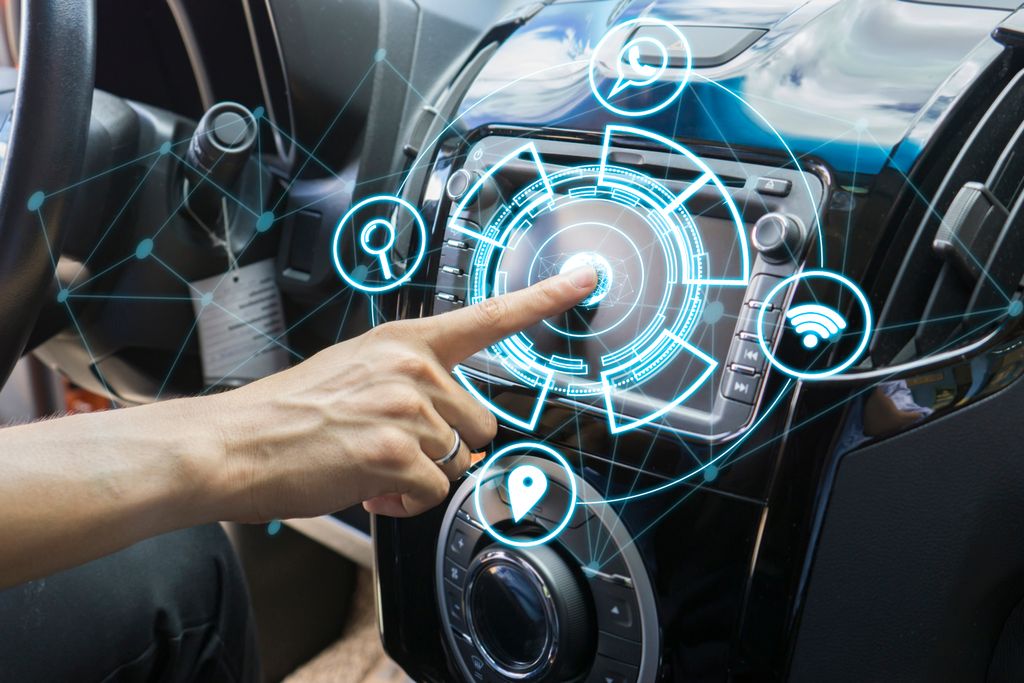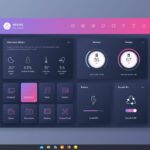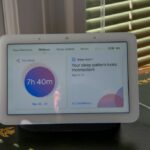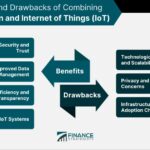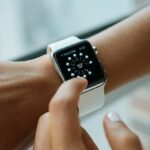An IoT dashboard is a powerful tool that allows users to monitor and manage their Internet of Things (IoT) devices. It provides a centralized platform to visualize data, control devices, and receive real-time updates. With the increasing popularity of IoT devices, finding the best free IoT dashboard is essential for individuals and businesses looking to harness the power of IoT technology. In this article, we will explore the key features, benefits, and considerations for selecting an IoT dashboard. We will also provide a list of the top free IoT dashboards and compare their features. Finally, we will discuss how to get started with an IoT dashboard and share best practices for using it effectively.
Key Takeaways
- An IoT dashboard is a centralized platform for monitoring and managing IoT devices.
- Key features of an IoT dashboard include data visualization, real-time monitoring, and alerts.
- Using an IoT dashboard offers benefits such as improved efficiency, enhanced control, and better decision-making.
- When choosing an IoT dashboard, consider factors like compatibility, scalability, and ease of use.
- Some popular free IoT dashboards include ThingsBoard, Ubidots, and Node-RED.
What is an IoT Dashboard?

Definition and Purpose
An IoT dashboard is a user interface that allows users to monitor and control their Internet of Things (IoT) devices and data. It provides a centralized platform for managing and visualizing real-time data from connected devices, enabling users to make informed decisions and take actions based on the insights gained. The main purpose of an IoT dashboard is to simplify the complexity of managing multiple IoT devices and data streams by providing a single, intuitive interface.
In addition to monitoring and control, IoT dashboards often offer features such as data analytics, reporting, and integration with other systems. These features enable users to gain deeper insights into their IoT ecosystem, identify trends and patterns, and optimize the performance of their devices and applications.
To effectively leverage the power of an IoT dashboard, it is important to choose the right one that aligns with your specific needs and requirements. In the next section, we will explore the key features to consider when selecting an IoT dashboard.
Key Features
When choosing an IoT dashboard, it’s important to consider the key features that will meet your specific needs. Here are some important features to look for:
-
Real-time Data Visualization: A good IoT dashboard should provide real-time visualization of data from your connected devices. This allows you to monitor and analyze data as it is generated, giving you valuable insights.
-
Customizable Dashboards: Look for a dashboard that allows you to customize the layout and design to suit your preferences. This will help you create a personalized and intuitive interface for monitoring your IoT devices.
-
Alerts and Notifications: An effective IoT dashboard should have the ability to send alerts and notifications based on predefined conditions. This ensures that you are promptly informed of any critical events or anomalies in your IoT system.
-
Data Analytics: Consider a dashboard that offers built-in data analytics capabilities. This will enable you to perform advanced analysis and derive meaningful insights from your IoT data.
Benefits of Using an IoT Dashboard
Using an IoT dashboard offers several benefits for businesses and individuals alike. Improved Data Visualization: With an IoT dashboard, you can easily visualize and analyze data from connected devices in real-time. This allows you to gain valuable insights and make informed decisions based on the data. Streamlined Monitoring and Control: An IoT dashboard provides a centralized platform for monitoring and controlling multiple devices and systems. This simplifies the management process and enhances efficiency. Enhanced Efficiency and Productivity: By automating tasks and processes through an IoT dashboard, businesses can improve efficiency and productivity. This frees up time for employees to focus on more strategic and value-added activities. Proactive Alerts and Notifications: IoT dashboards can send alerts and notifications in real-time, allowing businesses to respond quickly to any issues or anomalies. This helps prevent downtime and minimize disruptions. Cost Savings: By optimizing resource usage and identifying areas for improvement, an IoT dashboard can help businesses save costs in terms of energy consumption, maintenance, and operational expenses. Improved Decision-Making: With access to real-time data and analytics, businesses can make data-driven decisions that are based on accurate and up-to-date information. This can lead to better outcomes and competitive advantages. Overall, using an IoT dashboard can significantly improve operational efficiency, enhance decision-making, and drive business growth.
Choosing the Right IoT Dashboard

Considerations for Selection
When choosing the right IoT dashboard for your needs, there are several factors to consider:
- Compatibility: Ensure that the dashboard is compatible with the devices and protocols you plan to use.
- Scalability: Consider the scalability of the dashboard to accommodate future growth and expansion.
- User Interface: Evaluate the user interface to ensure it is intuitive and easy to navigate.
- Customization: Look for a dashboard that allows for customization to meet your specific requirements.
Additionally, it is important to consider the level of technical support provided by the dashboard provider. Having access to reliable support can be crucial in troubleshooting issues and maximizing the functionality of the dashboard.
Remember, selecting the right IoT dashboard is a critical decision that can greatly impact the success of your IoT project. Take the time to thoroughly evaluate your options and choose a dashboard that aligns with your goals and objectives.
Top Free IoT Dashboards
When it comes to choosing an IoT dashboard, there are several free options available that offer a range of features and functionalities. Here are some of the top free IoT dashboards to consider:
-
Dashboard A: This dashboard provides a user-friendly interface with customizable widgets and real-time data visualization. It offers support for a wide range of devices and protocols, making it suitable for various IoT applications.
-
Dashboard B: With a focus on data analytics and insights, this dashboard allows users to track and analyze key metrics. It offers advanced visualization tools and supports integration with popular IoT platforms.
-
Dashboard C: This dashboard stands out for its ease of use and simplicity. It offers basic monitoring and control features, making it ideal for beginners or small-scale IoT projects.
When choosing the right IoT dashboard, consider factors such as your specific requirements, scalability, and compatibility with your existing IoT infrastructure.
Comparison of Features
When comparing different IoT dashboards, it’s important to consider their key features and functionalities. Here is a comparison of some popular free IoT dashboards:
- Dashboard A: Offers real-time data visualization and customizable widgets. It supports a wide range of devices and provides easy integration with third-party services.
- Dashboard B: Provides advanced analytics and predictive insights. It has a user-friendly interface and offers seamless device connectivity.
- Dashboard C: Focuses on data security and privacy. It offers robust authentication and encryption features, ensuring the safety of your IoT ecosystem.
Each dashboard has its own strengths and weaknesses, so it’s crucial to evaluate them based on your specific requirements and use cases. Consider factors such as ease of use, scalability, and compatibility with your existing infrastructure.
Remember, the right IoT dashboard will empower you to effectively monitor and manage your IoT devices, unlocking the full potential of your connected ecosystem.
Getting Started with an IoT Dashboard

Setting Up the Dashboard
Setting up an IoT dashboard involves a few key steps:
-
Connect your devices: Begin by connecting your IoT devices to the dashboard. This can typically be done by entering the device’s unique identifier or by scanning a QR code.
-
Configure device settings: Once your devices are connected, you may need to configure their settings within the dashboard. This could include setting up data reporting intervals, defining thresholds for alerts, or customizing the device’s display on the dashboard.
-
Organize your dashboard: Take some time to organize your dashboard to suit your needs. This could involve rearranging widgets, creating custom dashboards for different use cases, or adding labels and tags to easily identify devices.
-
Set up user access and permissions: If you’re working with a team or multiple users, it’s important to set up user access and permissions. This ensures that each user has the appropriate level of access and can only view or modify the devices and data they are authorized to.
By following these steps, you can quickly and efficiently set up your IoT dashboard and start monitoring and managing your devices with ease.
Connecting Devices
Once you have set up your IoT dashboard, the next step is to connect your devices to it. This can be done through various methods depending on the type of devices you are using. Some common methods include:
- Wi-Fi: Devices that support Wi-Fi can be connected directly to your dashboard by entering the Wi-Fi credentials.
- Ethernet: For devices that have an Ethernet port, you can connect them to your dashboard using an Ethernet cable.
- Bluetooth: If your devices support Bluetooth, you can pair them with your dashboard to establish a connection.
It is important to ensure that your devices are compatible with your IoT dashboard and follow the necessary steps to establish a secure and reliable connection. Once connected, you can start monitoring and controlling your devices through the dashboard’s interface.
Customizing the Dashboard
Customizing the IoT dashboard allows users to personalize their experience and tailor it to their specific needs. Here are some ways to customize your IoT dashboard:
-
Layout customization: Arrange the widgets and components on the dashboard to suit your preferences. You can resize, move, or remove elements to create a layout that provides the most relevant information at a glance.
-
Color and theme customization: Change the color scheme and theme of the dashboard to match your branding or personal style. This can help create a cohesive and visually appealing interface.
-
Widget customization: Customize individual widgets by adjusting their settings, such as data sources, refresh rates, or display options. This allows you to focus on the specific data points that are most important to you.
-
User access customization: Control the level of access and permissions for different users or user groups. This ensures that each user sees only the relevant data and features they need.
Customizing the IoT dashboard empowers users to create a personalized and efficient monitoring and control system that meets their unique requirements.
Best Practices for Using an IoT Dashboard

Data Visualization
Data visualization is a crucial aspect of an IoT dashboard as it allows users to easily understand and interpret the data collected from connected devices. Visualizing data in a clear and concise manner helps users identify patterns, trends, and anomalies, enabling them to make informed decisions. Whether it’s through charts, graphs, or maps, data visualization provides a visual representation of complex data sets, making it easier to comprehend and analyze.
When it comes to data visualization in an IoT dashboard, it’s important to consider the following:
- Choosing the right type of visualization: Depending on the nature of the data and the insights you want to gain, different types of visualizations may be more effective. For example, line charts are great for showing trends over time, while bar charts are useful for comparing different categories.
- Customizing visualizations: An effective IoT dashboard allows users to customize and personalize the visualizations according to their specific needs and preferences.
In summary, data visualization plays a crucial role in an IoT dashboard, enabling users to gain valuable insights from the collected data in a visually appealing and easily understandable format.
Real-time Monitoring
Real-time monitoring is a crucial feature of an IoT dashboard that allows users to track and analyze data in real-time. With real-time monitoring, users can instantly view the current status of their connected devices and receive immediate updates on any changes or anomalies. This feature enables proactive decision-making and quick response to any issues or emergencies.
To ensure effective real-time monitoring, it is important to have a dashboard that provides real-time data visualization. This allows users to easily interpret and analyze the data as it is being generated. Additionally, the dashboard should support customizable alerts and notifications, so users can be promptly informed of any critical events or thresholds being exceeded.
In summary, real-time monitoring is a vital capability of an IoT dashboard that empowers users to stay informed and take timely actions based on the latest data from their connected devices.
Alerts and Notifications
Alerts and notifications are crucial features of an IoT dashboard that keep users informed about important events and updates. These features enable users to stay on top of their IoT devices and ensure timely actions are taken when necessary.
Real-time alerts: IoT dashboards provide real-time alerts that notify users immediately when a specific event or condition occurs. This allows users to respond quickly and address any issues or anomalies in their IoT system.
Customizable notifications: Users can customize the types of notifications they receive and how they are delivered. Whether it’s through email, SMS, or push notifications, users have the flexibility to choose the most convenient method for receiving alerts.
Threshold-based alerts: IoT dashboards often allow users to set thresholds for various parameters. When a parameter exceeds or falls below the specified threshold, an alert is triggered, indicating a potential problem or abnormality.
Actionable notifications: In addition to receiving alerts, IoT dashboards can also provide actionable notifications. These notifications include suggestions or recommendations on how to resolve issues or optimize system performance.
By leveraging alerts and notifications in an IoT dashboard, users can proactively monitor their IoT devices, detect anomalies, and take prompt actions to ensure the smooth operation of their IoT system.
Conclusion
In conclusion, finding the best free IoT dashboard is essential for managing and monitoring your IoT devices effectively. With a wide range of options available, it can be overwhelming to choose the right one. However, by considering factors such as ease of use, customization options, and data visualization capabilities, you can narrow down your choices. Whether you are a hobbyist or a professional, having a reliable and user-friendly IoT dashboard is crucial for optimizing your IoT projects and achieving your desired outcomes. So, take the time to explore the different options and find the one that best suits your needs and requirements.
Frequently Asked Questions
1. What is an IoT dashboard?
An IoT dashboard is a web-based interface that allows users to monitor and control IoT devices and data in real-time.
2. What are the key features of an IoT dashboard?
Key features of an IoT dashboard include data visualization, real-time monitoring, alerts and notifications, and the ability to customize the dashboard.
3. What are the benefits of using an IoT dashboard?
Using an IoT dashboard provides users with centralized control and monitoring of IoT devices, improves operational efficiency, enables data-driven decision making, and enhances overall user experience.
4. What should I consider when selecting an IoT dashboard?
When selecting an IoT dashboard, consider factors such as compatibility with your IoT devices, ease of use, scalability, security features, available integrations, and customization options.
5. Can you recommend some free IoT dashboards?
Some popular free IoT dashboards include ThingsBoard, Ubidots, Losant, Freeboard, and Node-RED.
6. How do I connect devices to an IoT dashboard?
To connect devices to an IoT dashboard, you typically need to use protocols such as MQTT or HTTP to send data from the devices to the dashboard. The dashboard then processes and visualizes the data.
